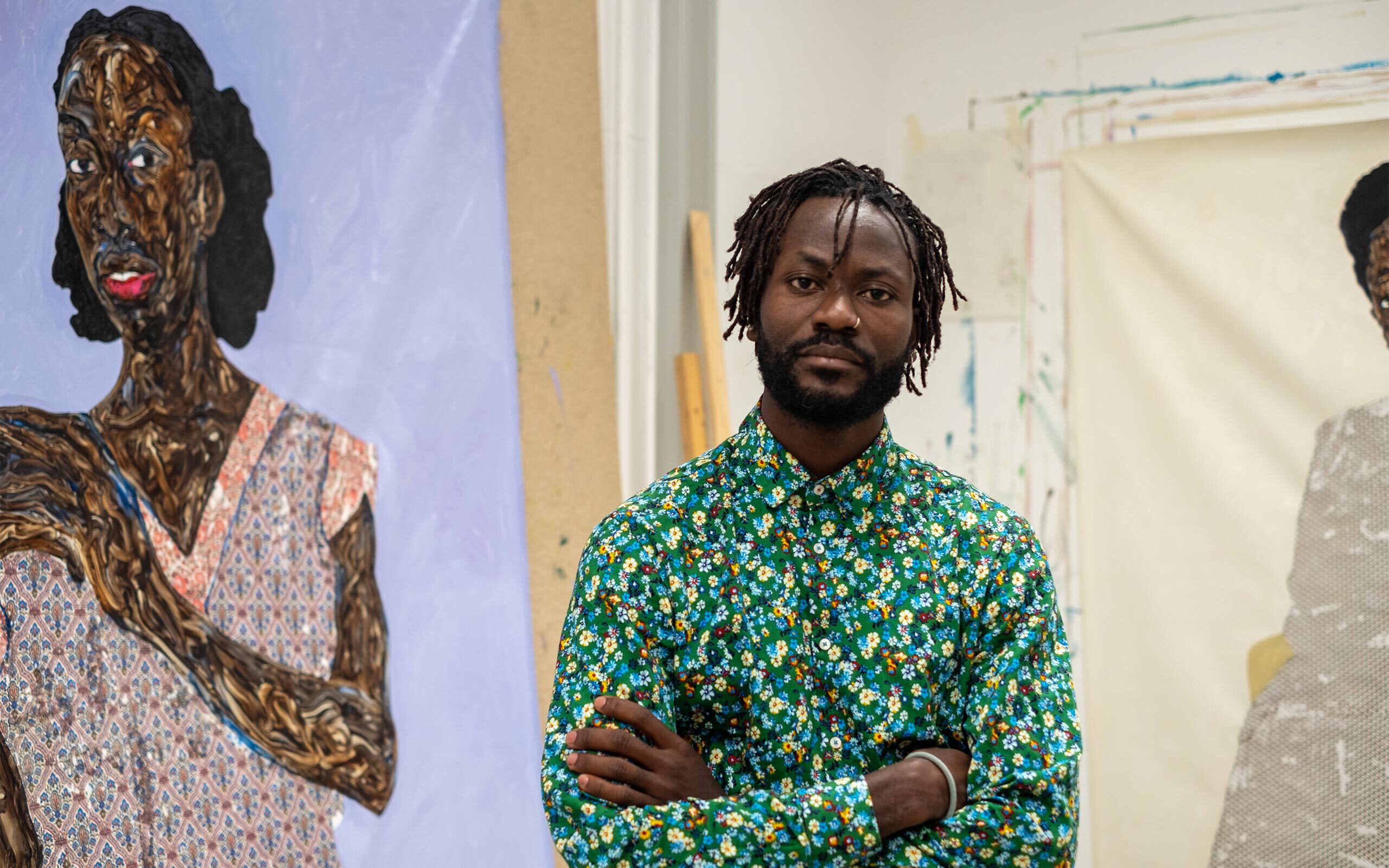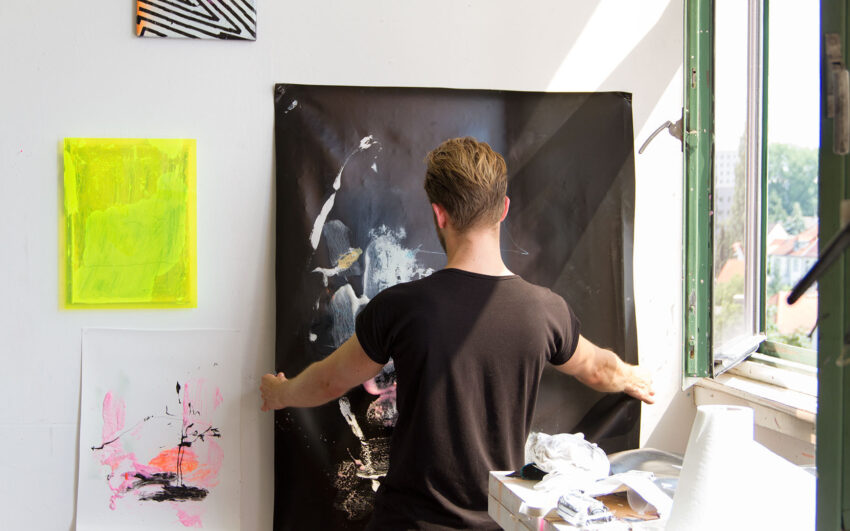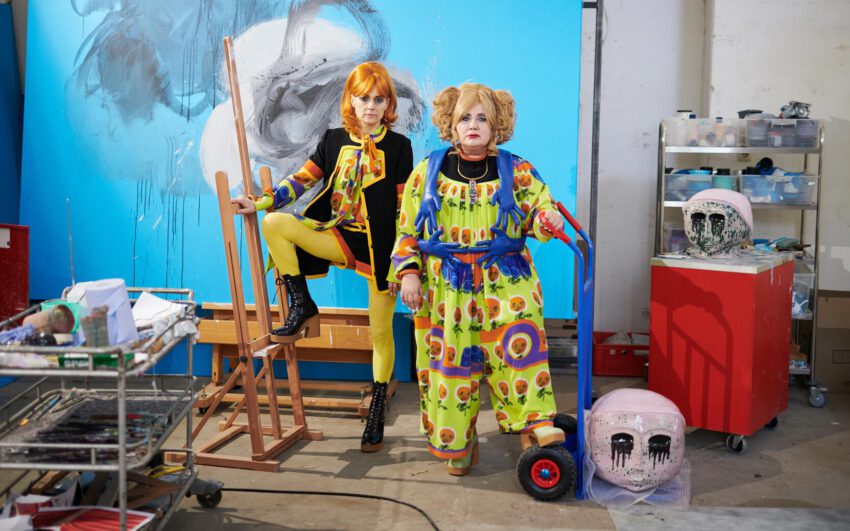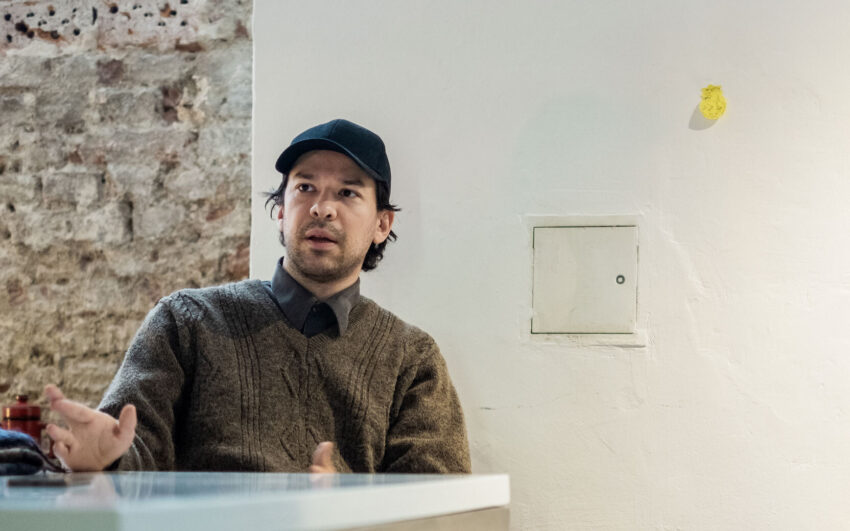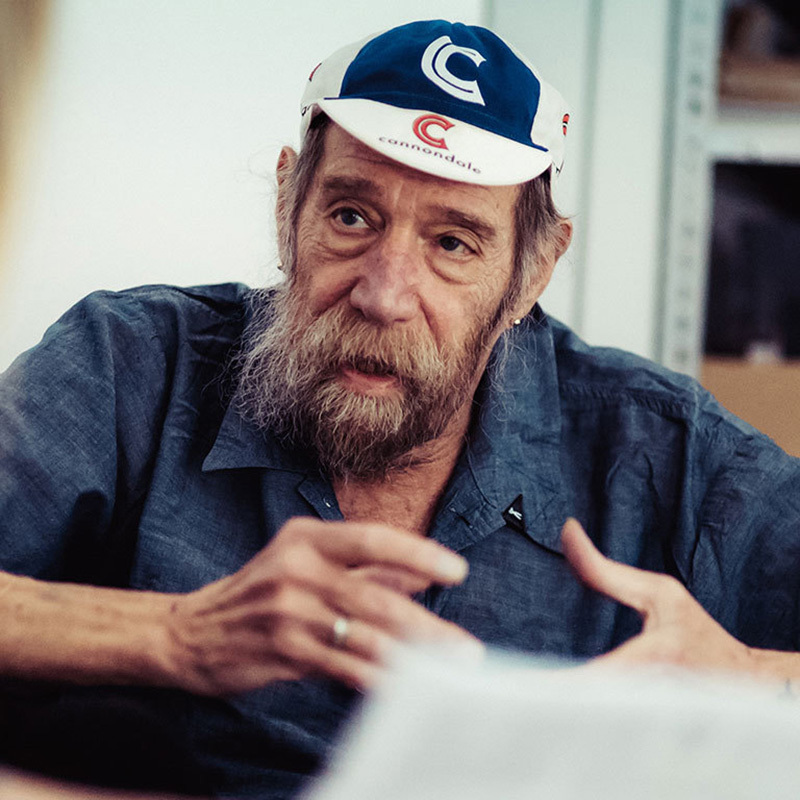Amoako Boafo’s world is inhabited by powerful characters. Thanks to his use of color and his vibrant brushstrokes the Ghanaian painter, who is based in Vienna, brings yet another strong individual alive with every canvas he completes. Boafo studied in the class of Kirsi Mikkola at Academy of fine arts Vienna. We met the recipient of the 2019 Strabag Prize in his studio to dive head first into his world.
Amoako, your work is full of colors, patterns, and vibrant contrasts. Can you identify the source you get all this inspiration from?
University. My class has a very good energy. There I'm surrounded by colors, different techniques, and lots of painting styles. From portraiture to abstract and figurative painting, almost everything happens in this class. When you work in different places in the studio you always adopt something from the person next to you. But color is the one thing that you find in all the work and so I'm always surrounded with it.
The people you portray give the impression of being very strong in character and it feels like you are building a quite intimate connection with them.
I actually know most of the characters I paint. I am familiar with their expressions and their energy. When you see the portrait I want you to know: This is their energy. By painting them I can connect the colors I use with the energy of the people I portray.
It strikes me that the works you created here in your studio all use quite distinct patterns. Is this something you got interested in recently?
I'm interested in patterns, yes, but it takes a lot of time to paint them. So I don't. (laughs) But recently I got into the transfer technique, which helps me to put the patterns I like onto the painting without necessarily having to paint them. It's a slow process to apply the transfer liquid, to put the pattern on and then to rub it gently to help the pattern stay on the painting. It still takes a lot of time but experimenting with this transfer technique helps me add a new layer to my work.
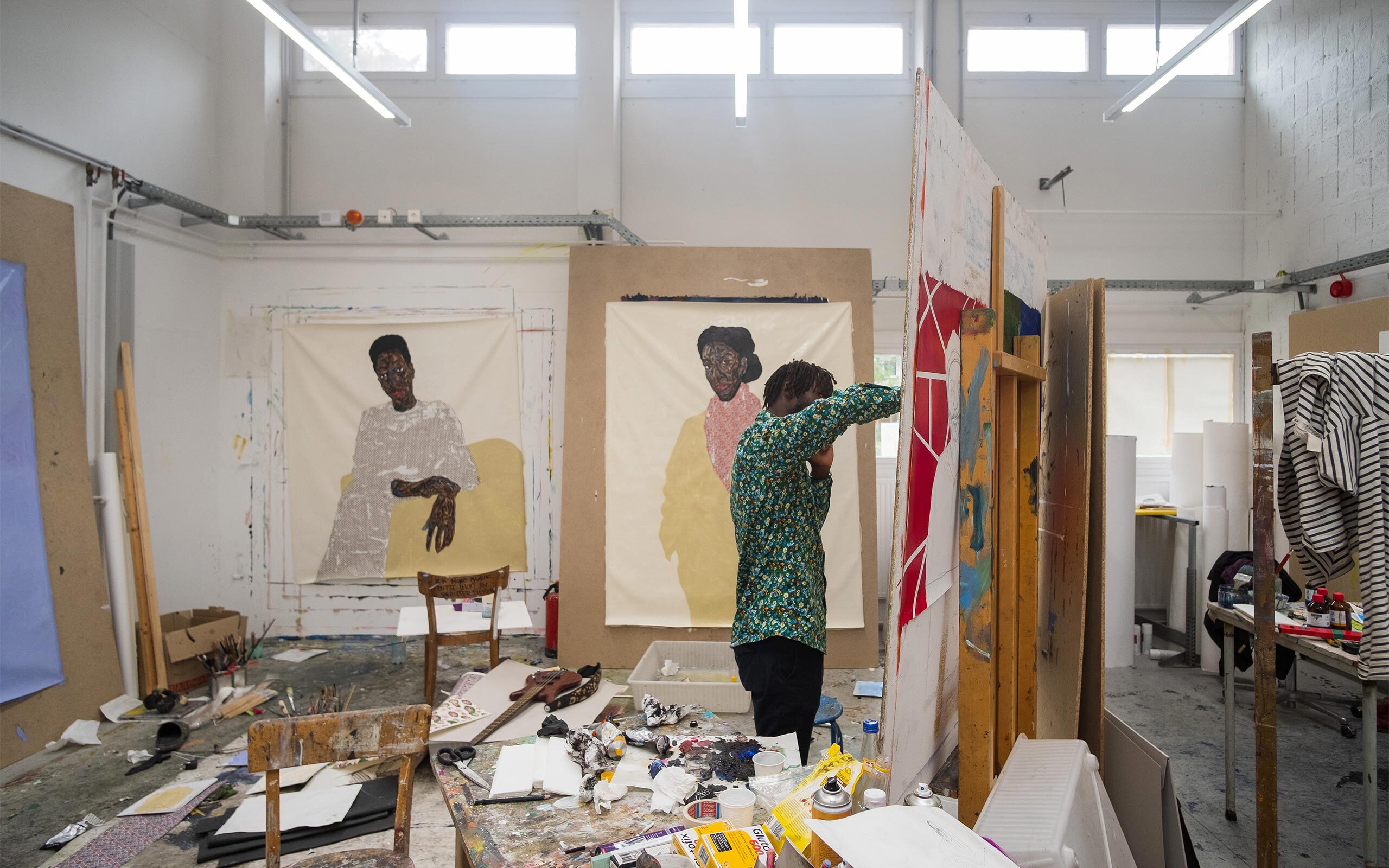
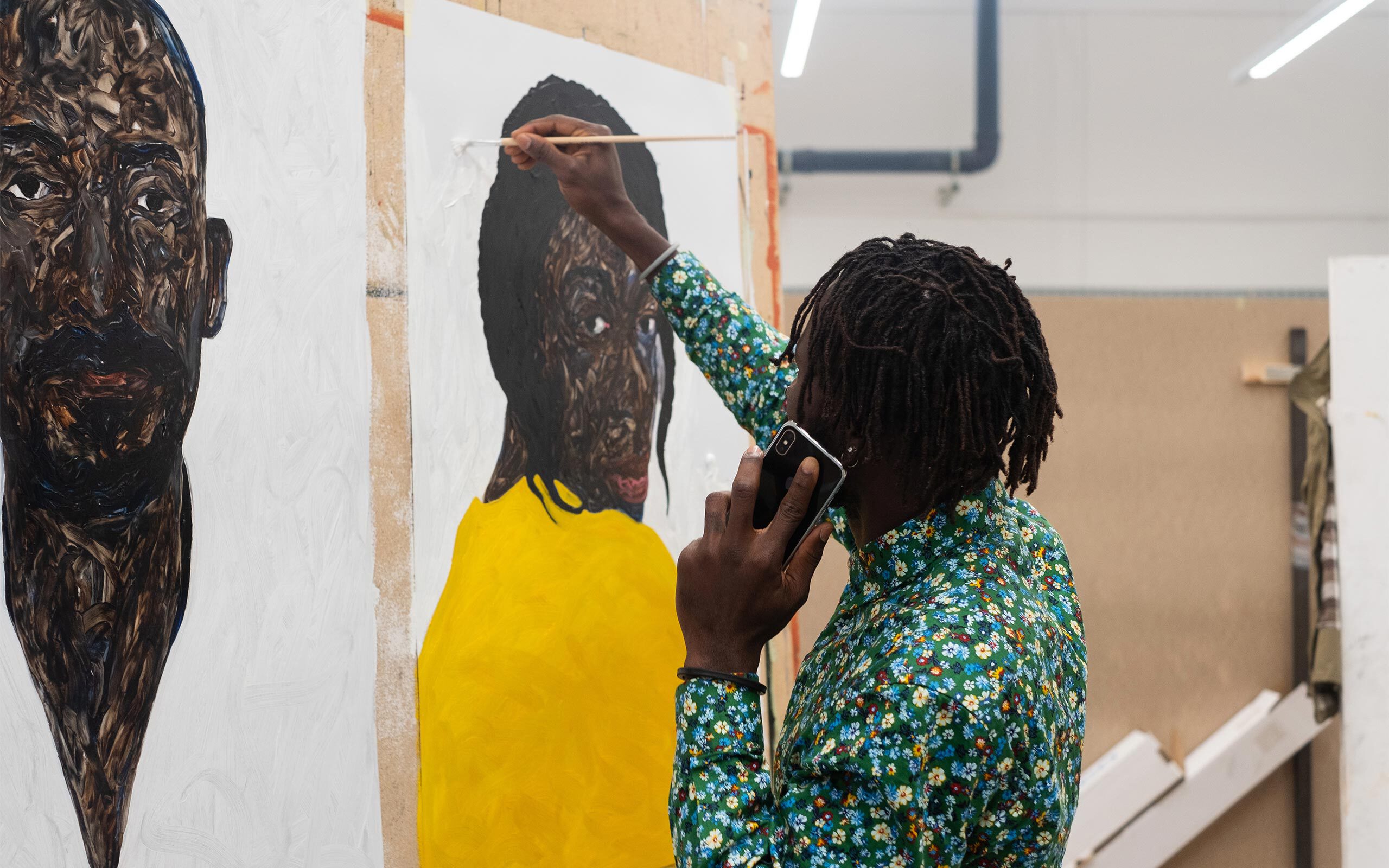
What role does “blackness” or “black pride” play in your paintings?
For me painting is basically documenting and celebrating blackness. The main idea or goal of what I do is to paint people I like, people that inspire me, people who create spaces and opportunities. All I do is document the good people around me.
Does the term “black artist” mean anything to you? And how do you feel about such labels?
People often ask me: Why do you only paint black people? But I don't think anyone would ask a white artist painting white people about that. In Ghana I'm part of the majority and no one ever questioned why I painted black people. So having to answer this question here is a bit weird for me. I am an artist and that's it. If you look at my paintings and decide that painting black people makes me a black artist, then that's OK. What matters for me is that I know I'm an artist and that I paint characters I like, characters that I identify myself with.
So, portraying someone is an act of friendship for you, an act of respect?
There has to be something organic that connects me to the person I paint. If I don't connect I cannot paint. With some of my pictures I know the people I paint in person. In that case it’s a very intimate process where every movement, every color and every brushstroke I make is based on that relationship. Others I know from a distance, and so I work more with expression, movement and the clothes they are wearing.
What's your process when you portray someone – let's say someone you know personally. Would you meet and sit with them in person?
Or do you work from pictures? I meet them and we talk. And then I take photos. I have to be in the right zone to paint the way I want to. My primary idea is to not just get the resemblance right but to capture the character. Sometimes they would look at their picture and be like, “This is actually me, although it doesn't really look like me!”
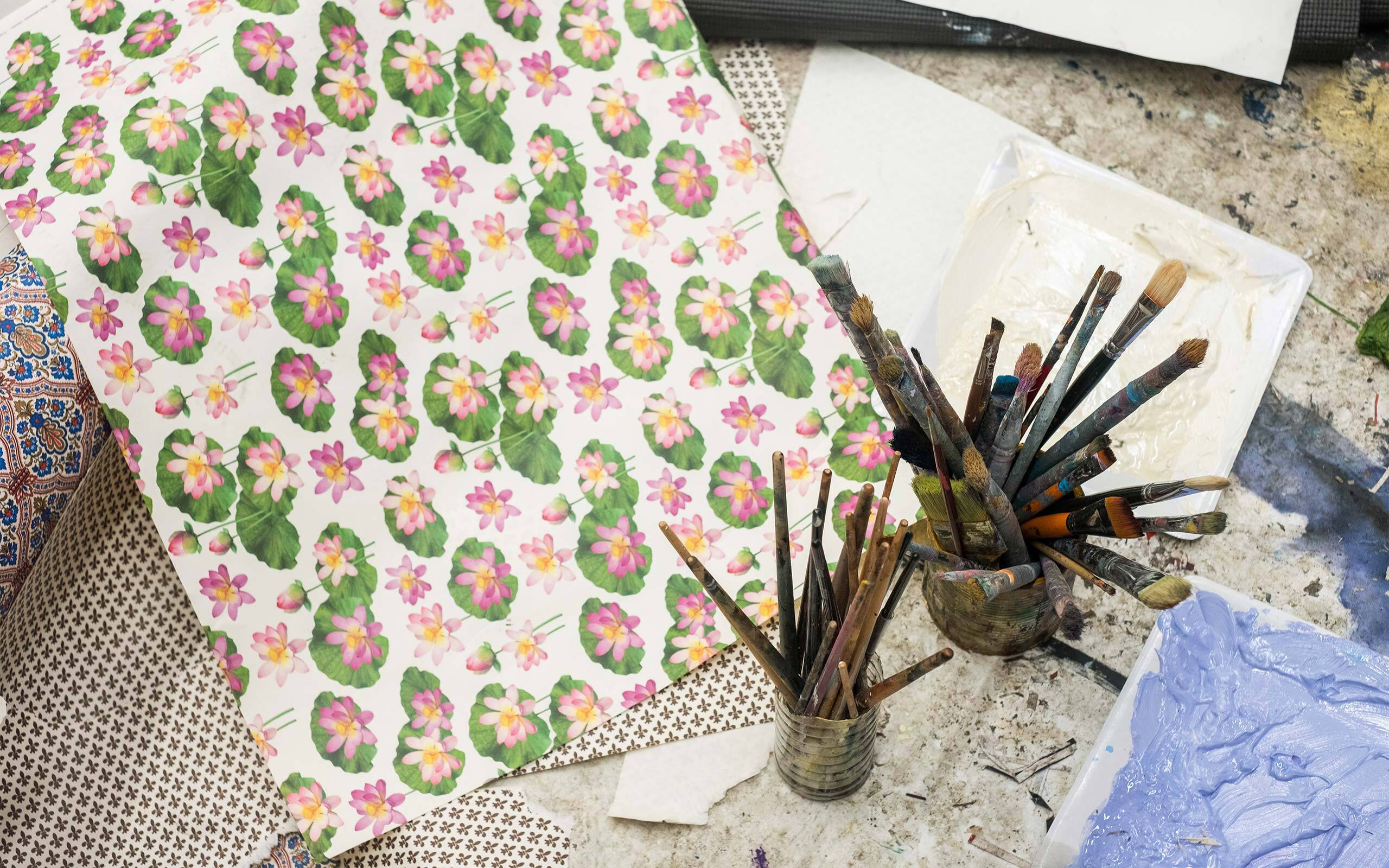
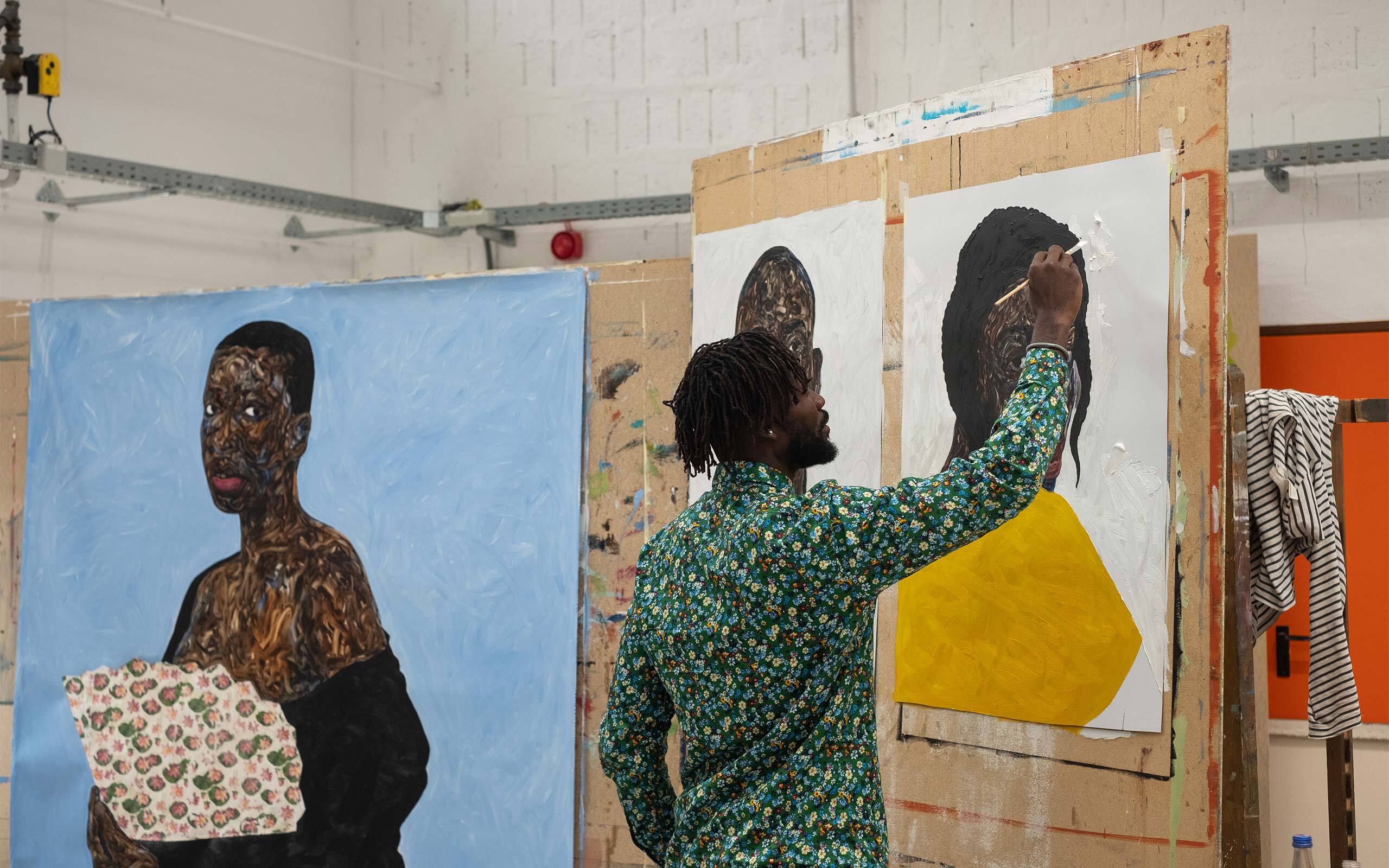
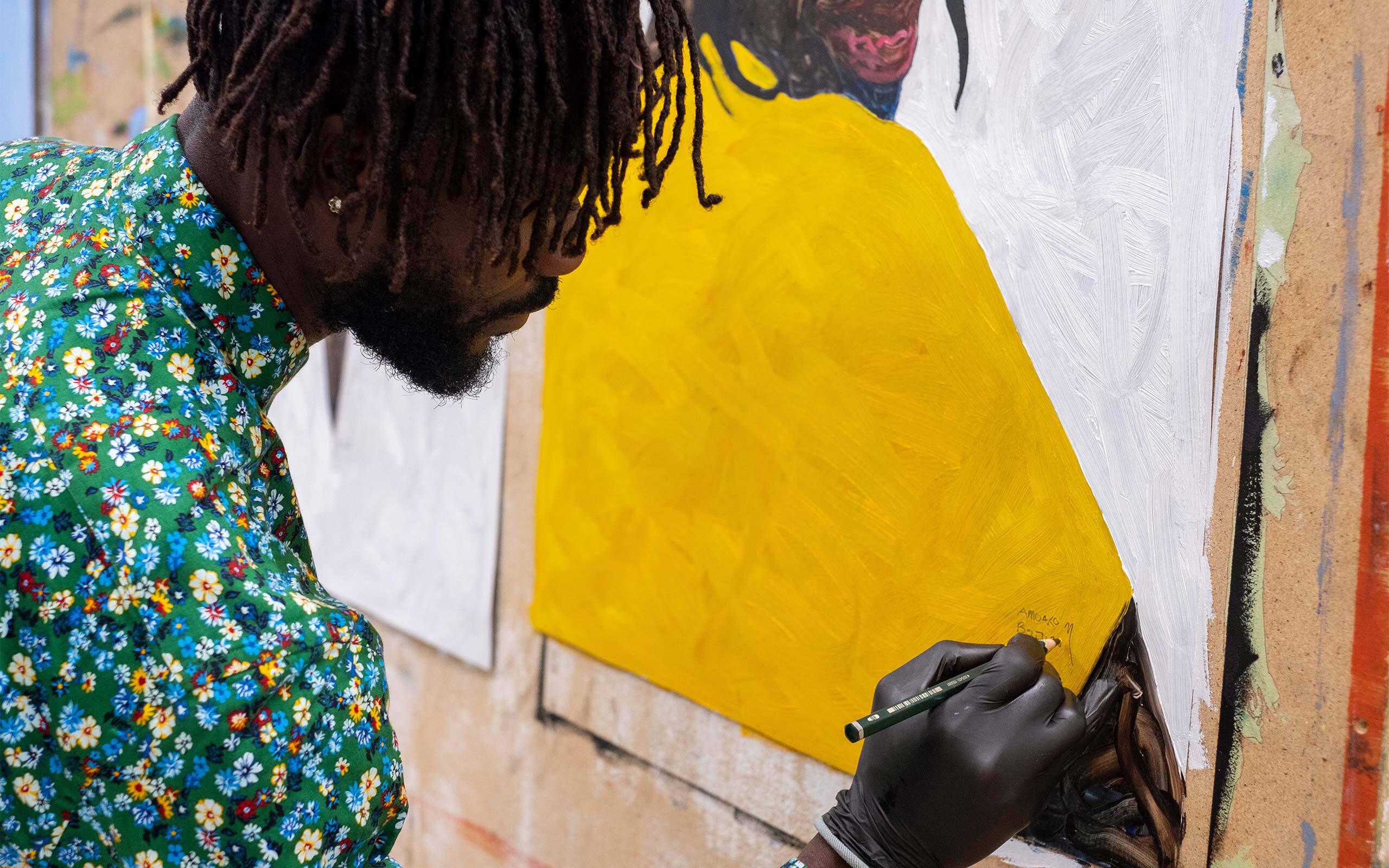
And when you paint people you don't know personally? What are you looking to find in them?
When I choose someone who I don't know, it's more about connecting to what they're doing through the painting. It’s my way of showing appreciation. So I will, for example, paint Thelma Golden. She's the director of Studio Museum Harlem. I chose her because she is doing amazing work by creating a space for black artists. I don't know her in person, but I feel connected to the energy of what she's doing.
Talking about connection: Something I find striking about your works, is the really direct look from your subjects that creates a very intense connection.
When you look at someone, it always means that you analyze them. The direct gaze in my paintings makes this person look back at you. You stare at the painting and someone stares back at you. That might not be very comfortable for you. It's not easy to be stared at because it means when you’re analyzing the painting, the painting is analyzing you at the same time. It's give and take. And then there’s a bit of me staring at you at well. I choose characters I also want to identify myself with. The colors, the energy, the patterns, the expressions – that's them, but then I always add something of myself too.
It is maybe because of the intense stare you were describing that somehow the viewer’s gaze is drawn to the person’s facial features and expression.
I just don't want anything to distract from the face of the person and the expression I want to get across. To make the things I want to say really stand out, I will try to reduce other elements as much as I can. Of course, it would be interesting to put stuff in the background and I also tried that some time ago. But even with the patterns I am using now I worried that people might just find the patterns beautiful and overlook the face. In the end I think they turned out to be a good complement.
A big part of the appeal of the faces you paint are the attention you pay to the extremely rich and deep skin tones.
On the one hand I want to make the face stand out because I want to highlight the character I’m painting. But I also want to make a point: By making the black faces I paint as strong and lively as they really are I want to show that blackness does not indicate negativity.
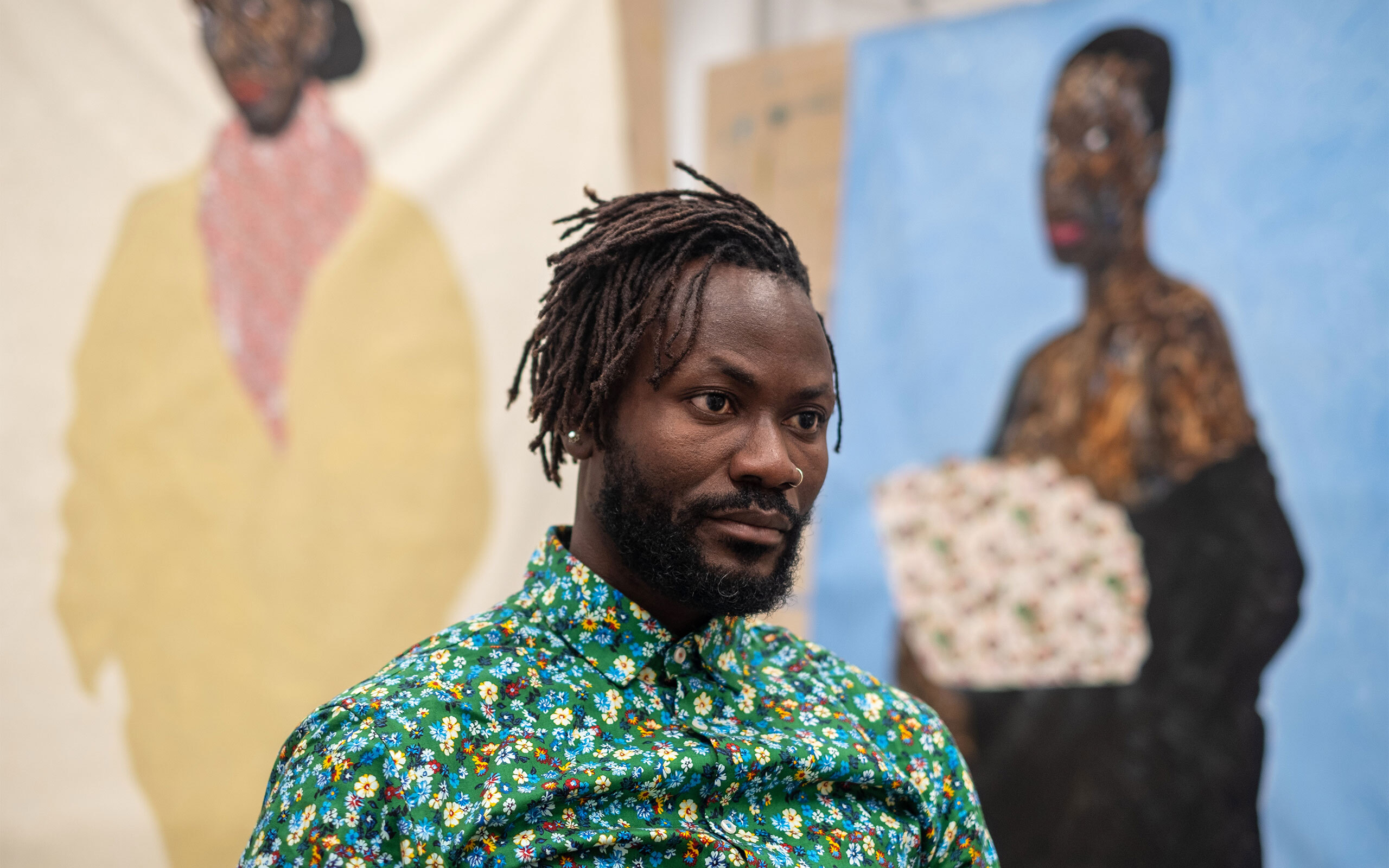
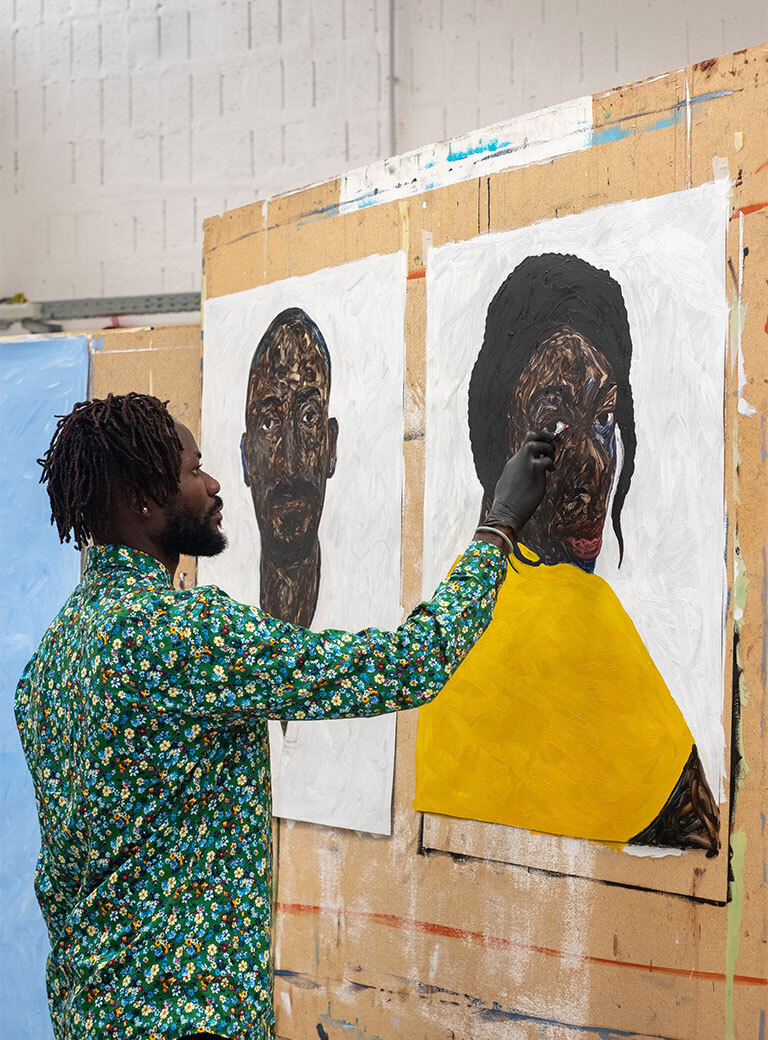
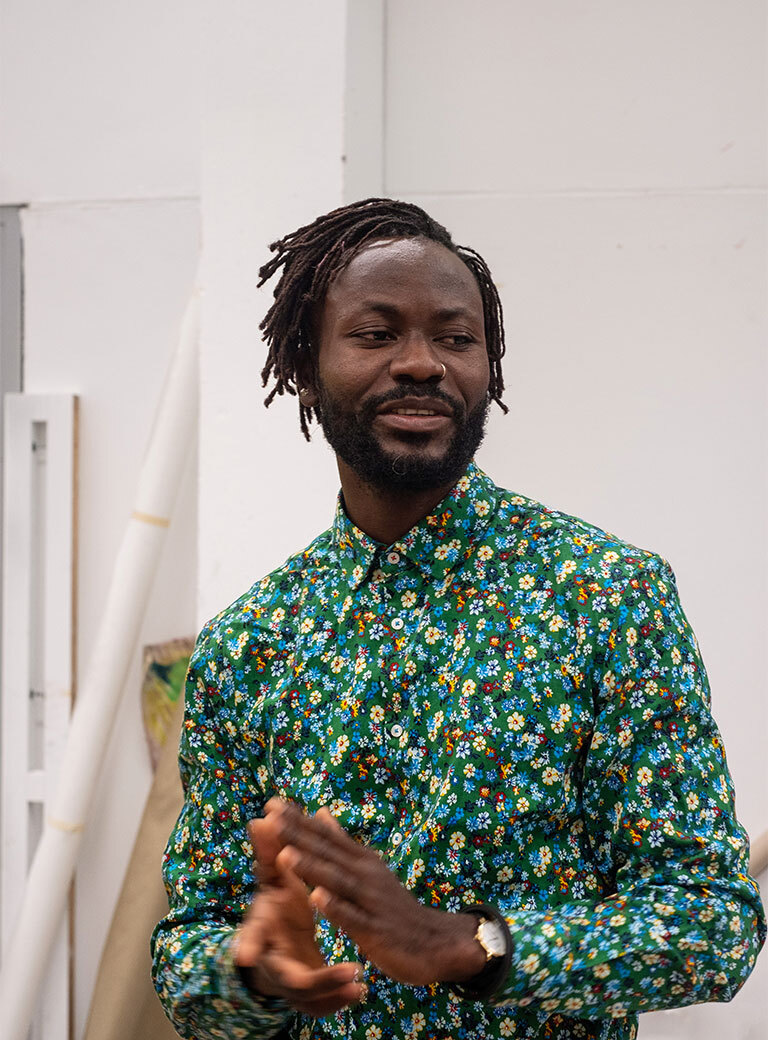
You’re a painter in an almost old-fashioned sense of the word. What is it that draws you to paint and canvas?
It's the one medium in which my mind is free. When I paint I don't think of anything else. I also like drawing and I learned how to sculpt. But at some point you have to be honest with yourself: Which way of working makes you free, which one allows you to express yourself most? And for me, that’s painting.
Not only are you a painter, you’re also a decidedly figurative painter. Can you describe what fascinates you so much about specifically portraying other humans?
I have always been interested in facial expressions. There is so much you can tell just by showing a human face. Just from looking at someone’s face you can say if they are happy or sad. That is one reason I like portraits so much. And then there is a certain gap: When you go to a museum or a big gallery all you see are white figures. You don't see the kind of faces I paint there. I want to do my own small bit to close that gap. So, yeah, that's my main goal: To paint a different kind of portrait.
Do you have particular influences in art history that are relevant for your work?
There are some people who connect my paintings to Egon Schiele, for example. Schiele is an amazing artist, so that’s very flattering. Before I moved to Vienna I wasn't painting like I’m painting now. I was searching for a way to paint figurative portraits in a loose and free way. So I would go to museums or look at books, thinking about how people like Schiele got there. In that way art history had a big influence on how I paint.
You were born and raised in Ghana. How did you end up in Vienna in the first place?
It's a very long story, but it comes down to that I met an Austrian in Ghana. We did some projects together and eventually got married. I came to Austria for the first time in 2012 to do a show. After a couple of exhibitions in Ghana I returned and went straight to the Akademie für Bildende Künste.
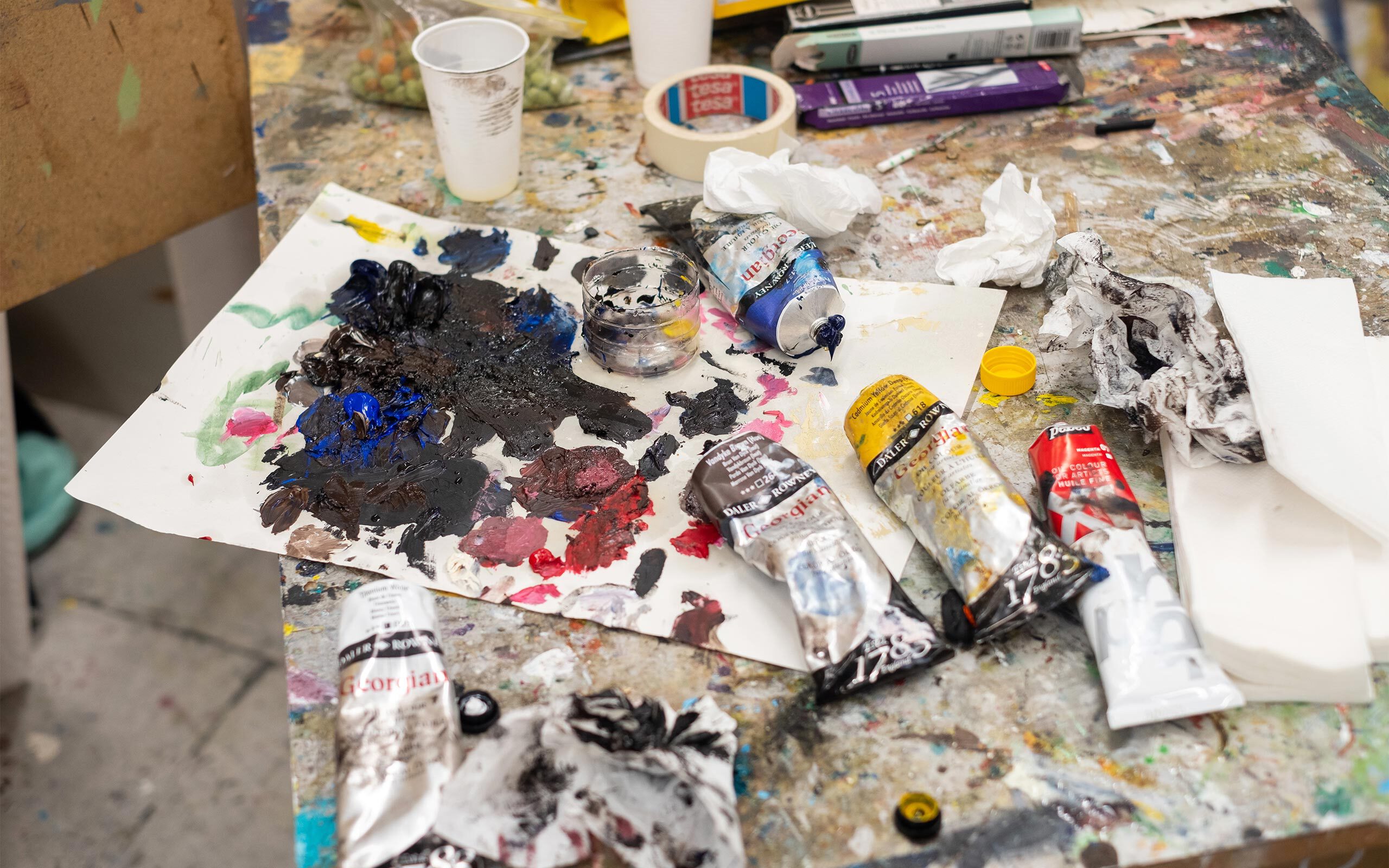
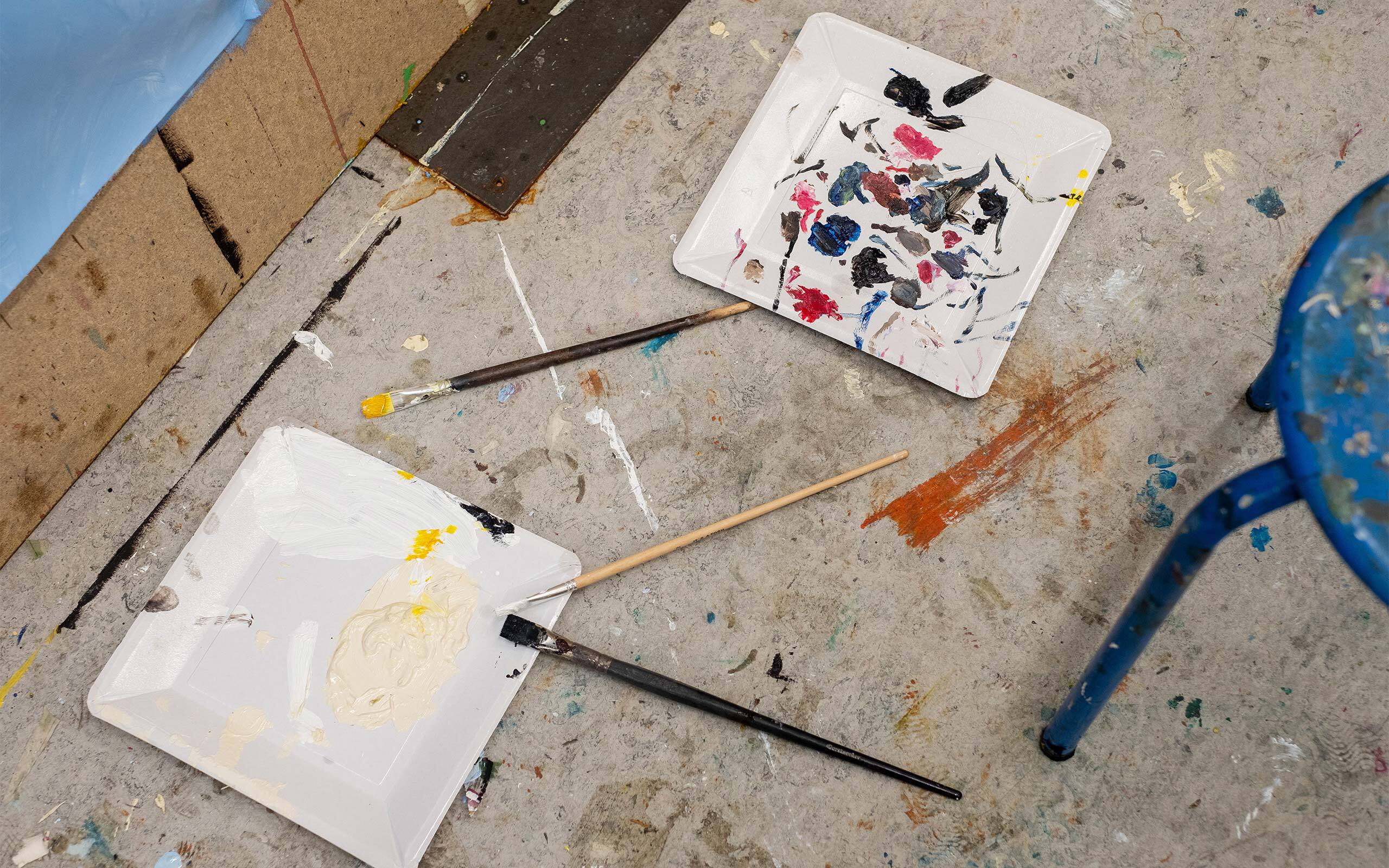
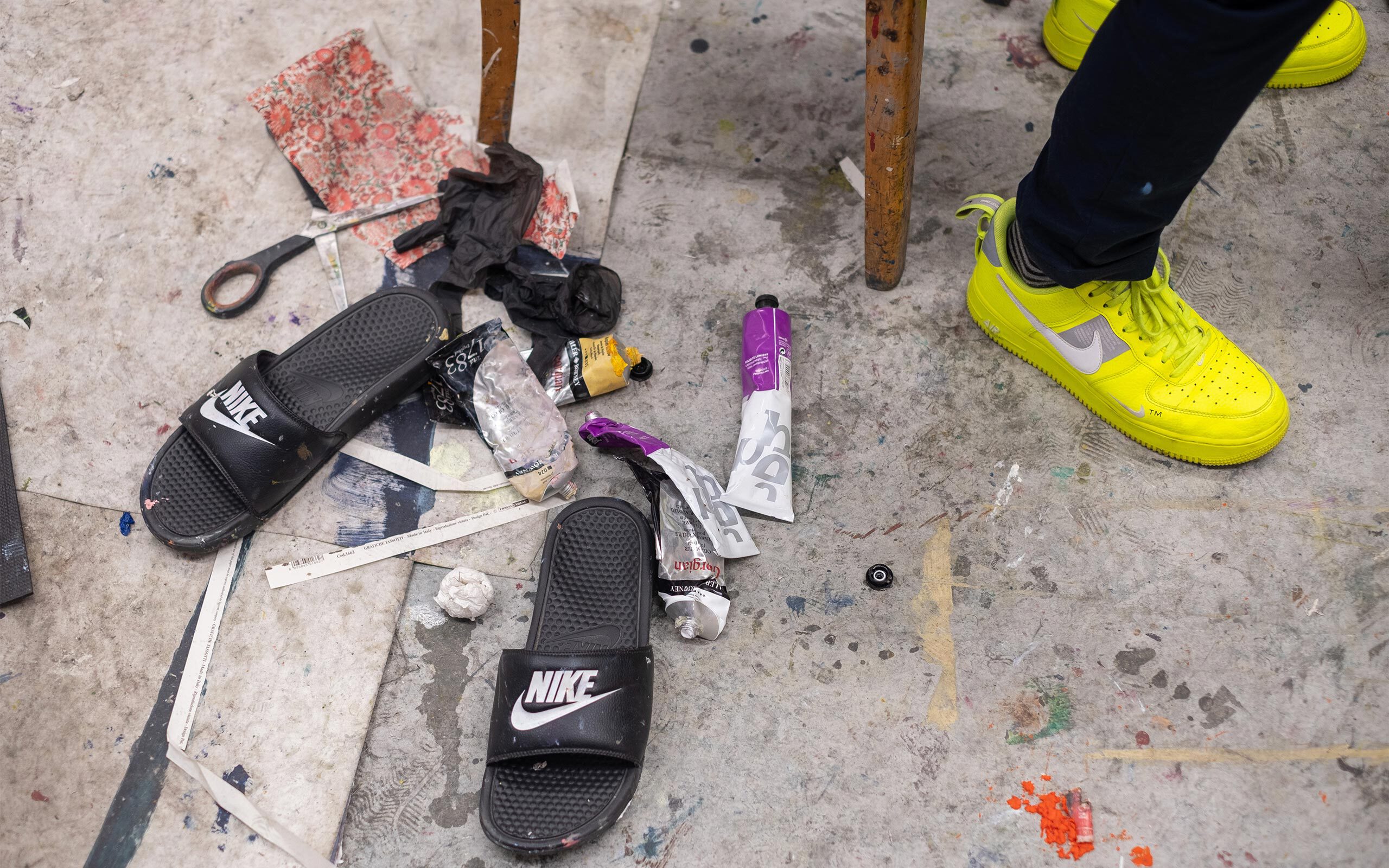
But you had started studying art already in Ghana, right? How did the new environment impact your work?
I did my diploma in Ghana in 2007, so I had been painting for quite some time before I moved to Vienna. Back home blackness was never an issue. As soon as I moved here, it became a big question: Why paint black people? The situation changed and so I had to work with these new experiences. Art for me is a way to deal with problems in a positive way. So, for example, if I was insulted, instead of complaining, I might come to the studio and paint someone with a strong character. By choosing to paint someone who's doing something somewhere to empower someone I’m able to stay positive. And my style of painting changed, too, because at the academy I could experiment and upgrade what I already knew. I wanted to get away from the academic way of painting, which I had learned in Ghana. The academy in Vienna helped me achieve that.
You have a series of portraits titled “Black Diaspora”. Is that body of work your way as a painter to show solidarity with a group you’re part of?
Yes, it is. Now that I am here, I have to enjoy my surroundings. When I go out, I just have to deal with any negativity that comes my way. You cannot avoid it. There's no way around it. It is what it is. Sometimes I'll be out there for maybe a week without seeing another person that looks like me. But here in the studio I am surrounded by I don't know how many black faces! For me painting is like creating my own community.
Switching the perspective, what is it like to study art and to be an artist in Ghana?
You would not want to be an artist in Ghana. And no one wants their kids to be artists because it's not something that will pay. When I went into art I knew that I would never be able to make money with it. It was out of passion. I knew I would have to get a job after finishing my diploma to pay my bills. Still, I didn’t give up and I was lucky to come here because despite all the obstacles there is much more support for artists here. I still go to Ghana a lot though. I've been there four times last year.
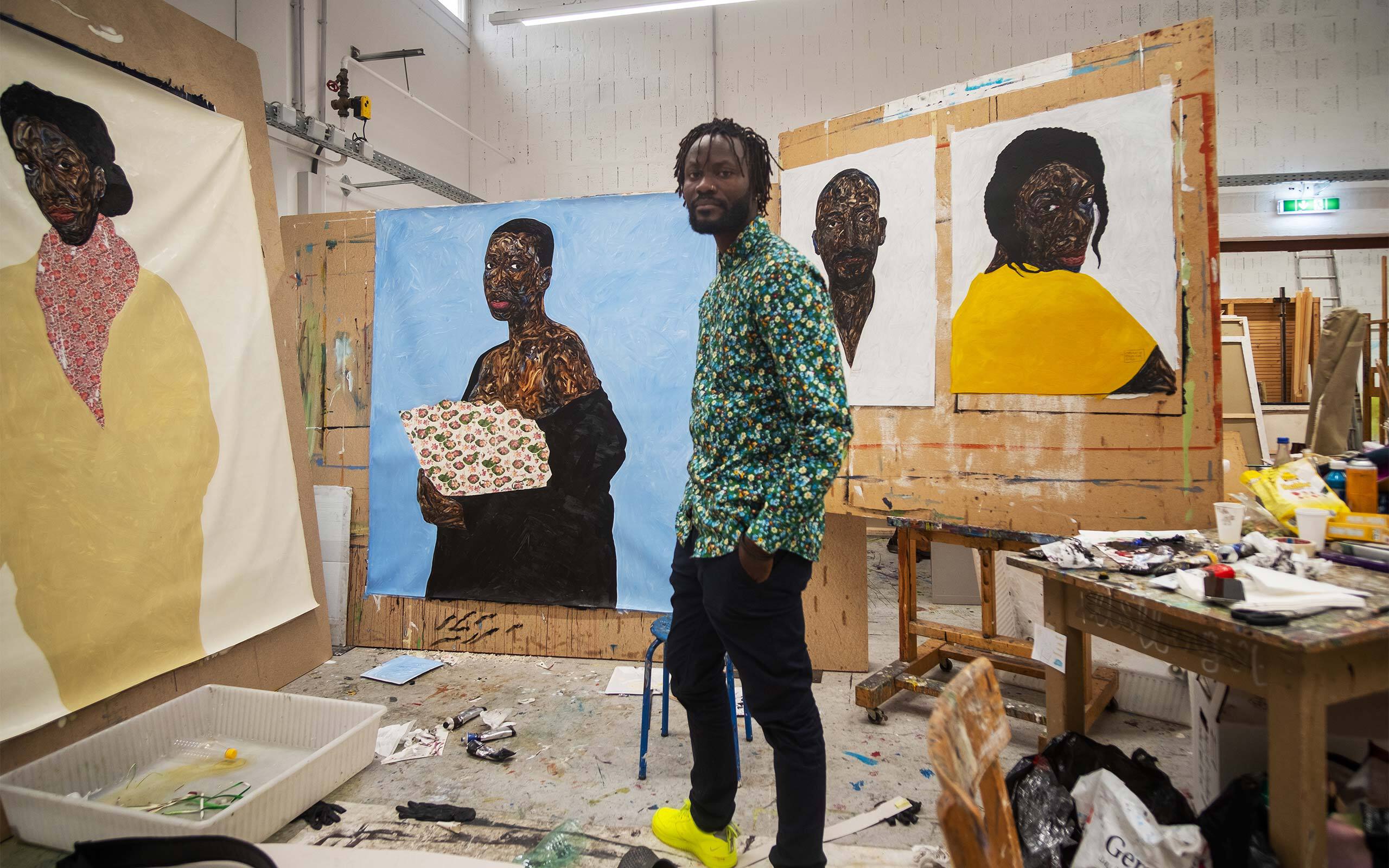
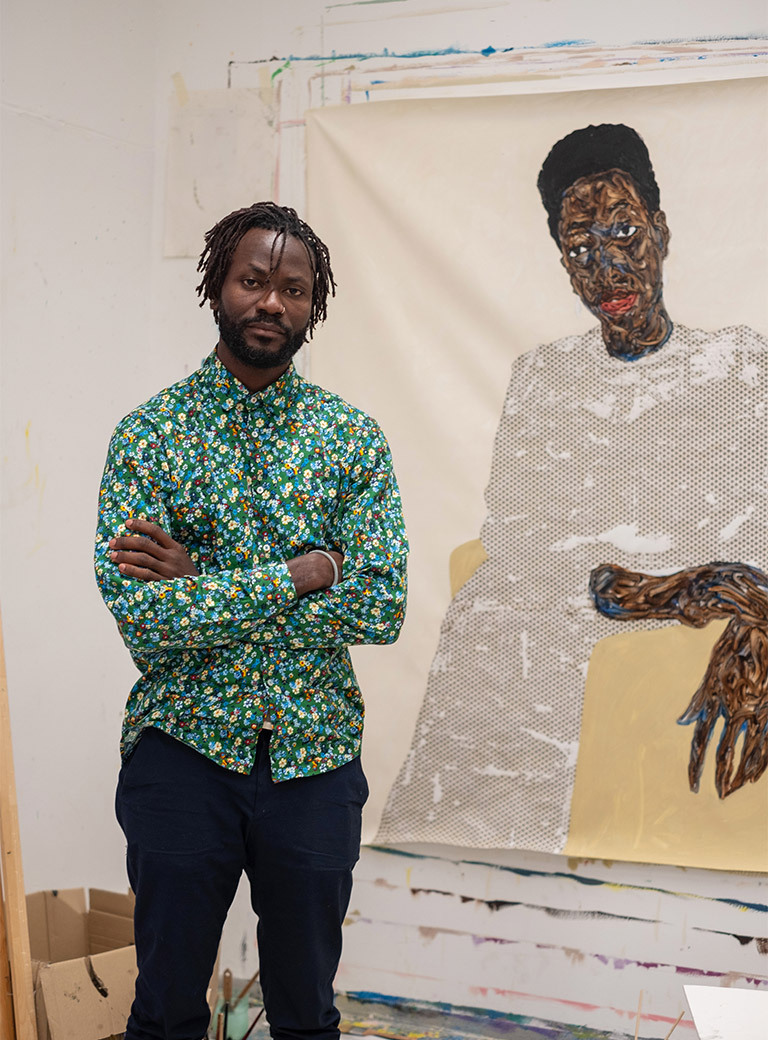
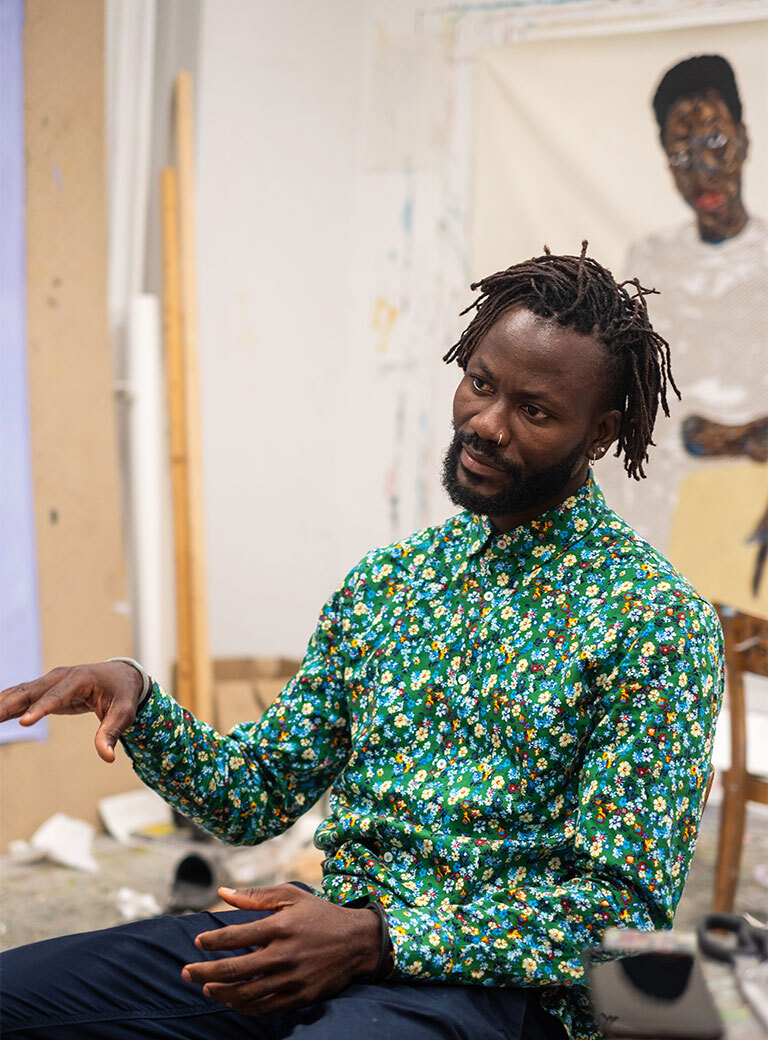
So when you travel back home is it to visit your family or to work and gather impressions?
Of course I go to Ghana because I have friends and family there, but I also go there because I also want to build an artist studio space there and create a residency program. I have the feeling when there are more opportunities for artists, people will not automatically think, they can only make it by going to Europe. Me, for instance, if there had been more spaces in Ghana, I wouldn't have thought of coming to Europe.
Do you have specific people who have inspired you, heroes that you keep on looking up to?
Kerry James Marshall! He's an old favorite of mine. I love him and I love his work. I honestly wish I can speak the way he speaks, but I don't think that's my job. Then I like Lynette Yiadom-Boakye. She's a Ghanaian artist, too, and based in London. And then there's Toyin Ojih Odutola, there's Henry Taylor and there's obviously Kehinde Wiley. I still get inspired every time I look at their works. It’s great to see where they started and where they are now. But my top favorite remains Kerry James Marshall.
What about other inspirations? Is there anything outside of art that influences your painting?
I listen to music a lot. It sets the mood, and it also helps with the movement of painting. Sometimes I feel like listening to Afrobeat, then Afropop or Jazz. Sometimes I’ll just listen to “Juicy” by B.I.G. When I listen to Juicy, it's only Juicy and I play it the whole day. Especially when I was in Los Angeles – I played this one track for the whole stay. When it's good, you have to listen to it on repeat, right?
Going forward, how are you going to develop your work? What are the next steps for you?
I keep on looking at my surrounding and allow myself to be inspired. I know which characters I want to paint. But I’m looking forward to see which colors and which patterns I’ll decide to use. Apart from that the main goal is to get my work into good collections and museums and to produce new work for exhibitions and fairs.
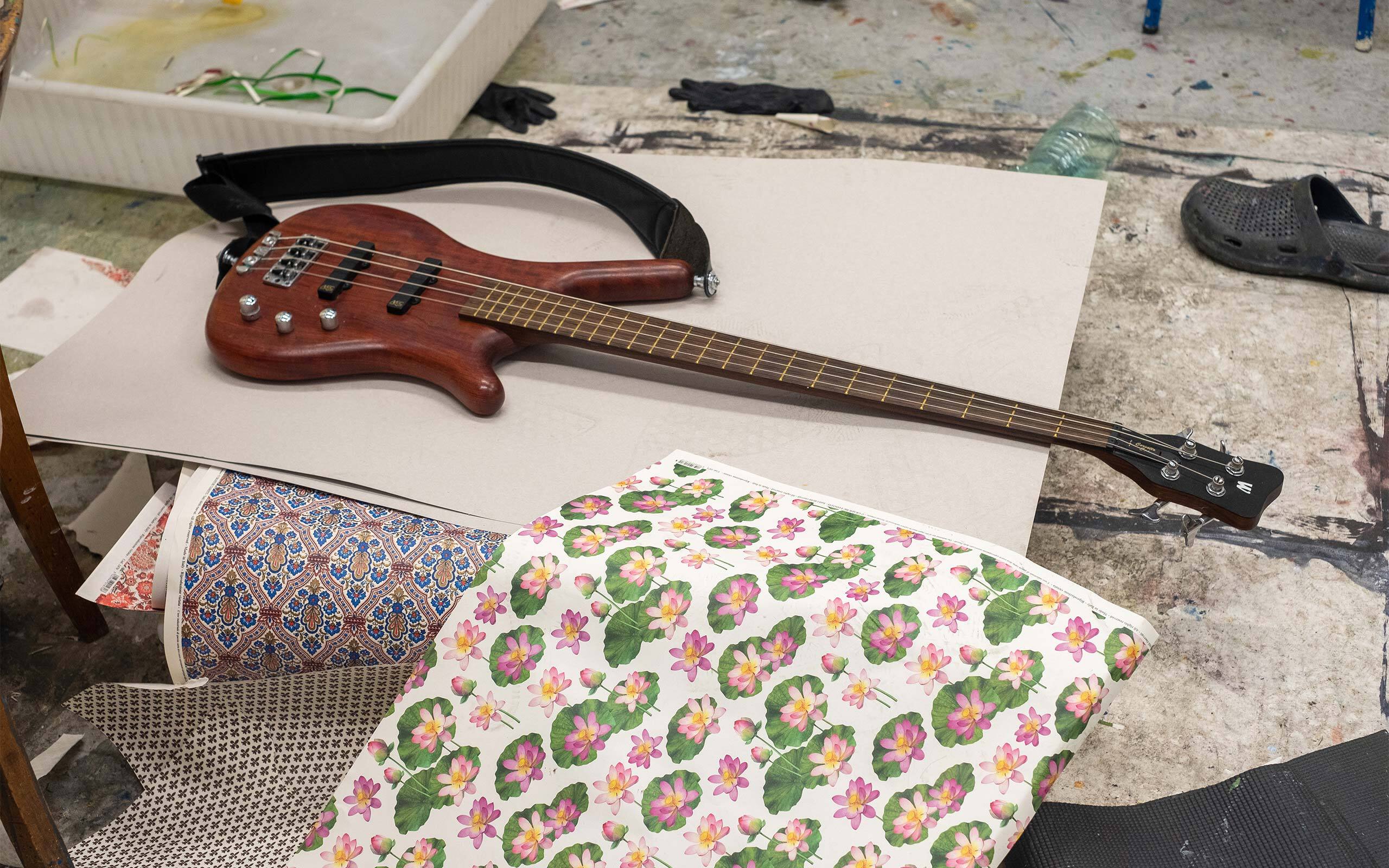
Interview: Gabriel Roland
Photos: Maximilian Pramatarov


